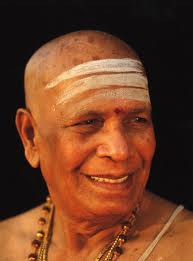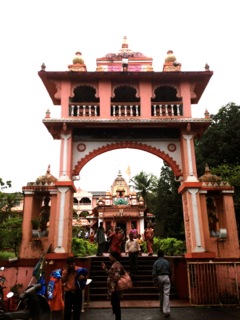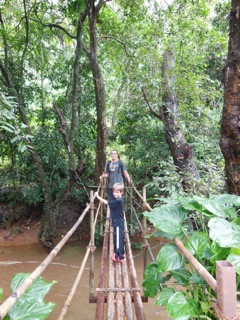Guru Purnima
July 3rd, 2012
Today is Guru Purnima. This holiday is to celebrate the Guru and it is honored on the full moon in the month of July. It is a widely practiced holiday amongst Buddhist and Hindu culture and is in place to give honor and respect to the spiritual teachers of the global community.
In Sanskrit, the word “Gu” is translated as darkness or ignorance. The word “Ru” means dispeller or remover. Therefore one who removes darkness and ignorance is considered Guru. The Guru/disciple relationship is regarded as a necessary part of life to help guide us through the many challenges that we face. On Guru Purnima, disciples offer puja (worship or offering) to pay respect to the Guru through devotion in the form of flowers, song and/or prayer.
When I began the practice of yoga I longed to meet a genuine Guru. I had been reading several accounts of travelers going to India to meet spiritual guides and had taken diksha (initiation) into the Guru/disciple relationship. I was completely intrigued by this concept. I had heard accounts of different experiences where people felt as if their lives began to open in a direction where they experienced peace and acceptance of their experiences in life. During this time sparked interest in discovering what my purpose was. The main story that stuck with me was the adage that “when one is ready, the Guru will appear.” I began to trust that this was true and to try to let go of the wanting right away. This in itself is a large part of why there is dissatisfaction and confusion to begin with. Wanting things to happen right now without facing the difficulty that comes with working through our issues can be the catalyst for confusion. Hence, the understanding of the journey with patience in practice began.
Fast forward to the first time Tamara and I traveled to India. We had heard amazing things about a man named Shri K. Pattabhi Jois who taught yoga in a town called Mysore in South India. Over several years of hearing accounts about him and after speaking with many people who had traveled to India to practice with him we became inspired to go and visit him ourselves. It was eight years ago and we had just finished a month of Ashtanga practice with Rolf Naujokat in Kho Phangan, Thailand. We made the journey from Thailand to India by boat, plane and car and began practice at his shala in Mysore. Right away he struck us as an extremely compassionate and gentle man. He also carried a “light” about him that was quite intense and direct. He could command complete respect with his voice and presence and then with a look melt you with the innocence of a child all within a moment. This sparked so much intrigue and interest for me to get to know him more. At the end of each class his students would line up and kneel down and touch his feet. I was so unsure what to make of this act. This was a foreign concept to me being raised in American culture, creating a unique challenge and an internal struggle regarding my own sense of surrender.
Several weeks went by and one morning I felt the inspiration to join in line. As I got close my palms began to sweat and I felt a bit nervous. Why was I so nervous? I kept asking myself this question because it didn’t seem like such a big deal, I am just showing respect for my teacher. My turn came and I knelt down and touched my hands to his feet and placed my forehead on the ground just below. I looked up at Guruji and he had such a gentle smile on his face and this resonated deeply within. Now an even stranger feeling came over me…I immediately broke down into tears. This feeling of catharsis was a necessity to move forward with surrender and humility. Feeling a bit shy, I slowly retreated and tried to remain as quiet as possible to try to assimilate this experience. It was at that point that I began to understand and appreciate the depth of the Guru. It is because of that point, that I continue to aim to cultivate this type of respect for the teacher. It is through the practice of humility as a student that we can truly appreciate the grace of the teacher.
Guruji passed away several years ago. Yet his teaching and his presence is alive and thriving today. There are several senior Ashtanga teachers who were dedicated students of Guruji that continue to teach and instruct through this method. By virtue of dedication to practicing yoga, which is really quite simple, the essence of the Guru remains alive. Yesterday, following practice with Rolf, there was such an ease of conversation that it felt that there was really no need for conversation. A simple namaskar(hands in prayer and gentle bow) and a smile can convey everything. When we begin to contemplate what Guru yoga is and how it applies to our own lives it can bring up a lot of inquiry and question. I feel this is a completely personal journey for each individual and that there is no exact formula that works exactly right for each person. By the same token, there is a wonderful formula that can work for every person and it begins with humility. On our first trip to India I had asked a taxi driver, “do you have a Guru?” He replied, “Everyone is Guru. We can learn something from everyone if we choose to truly listen.” This is profound Indian taxi cab wisdom. My teacher Tim has often said something that seems to sum it up nicely. He says “My goal as a teacher is to inspire a passion for practice. The practice itself, done consistently and accurately, is the real teacher.” This is a wonderful outlook!























